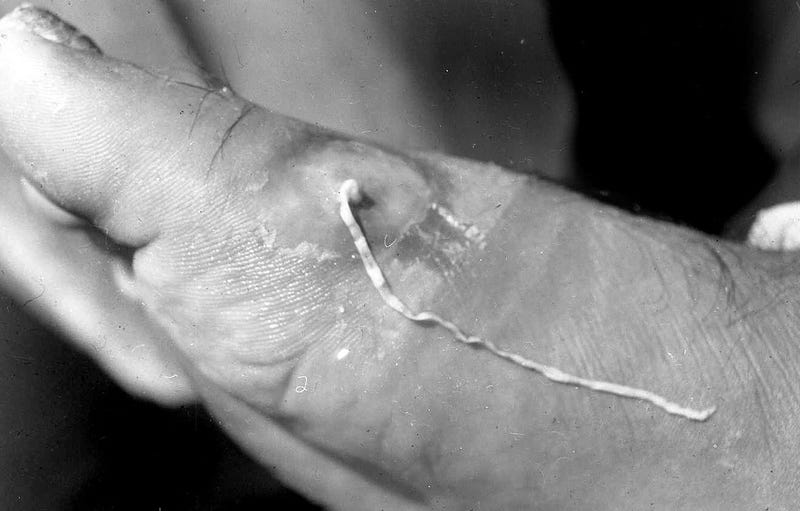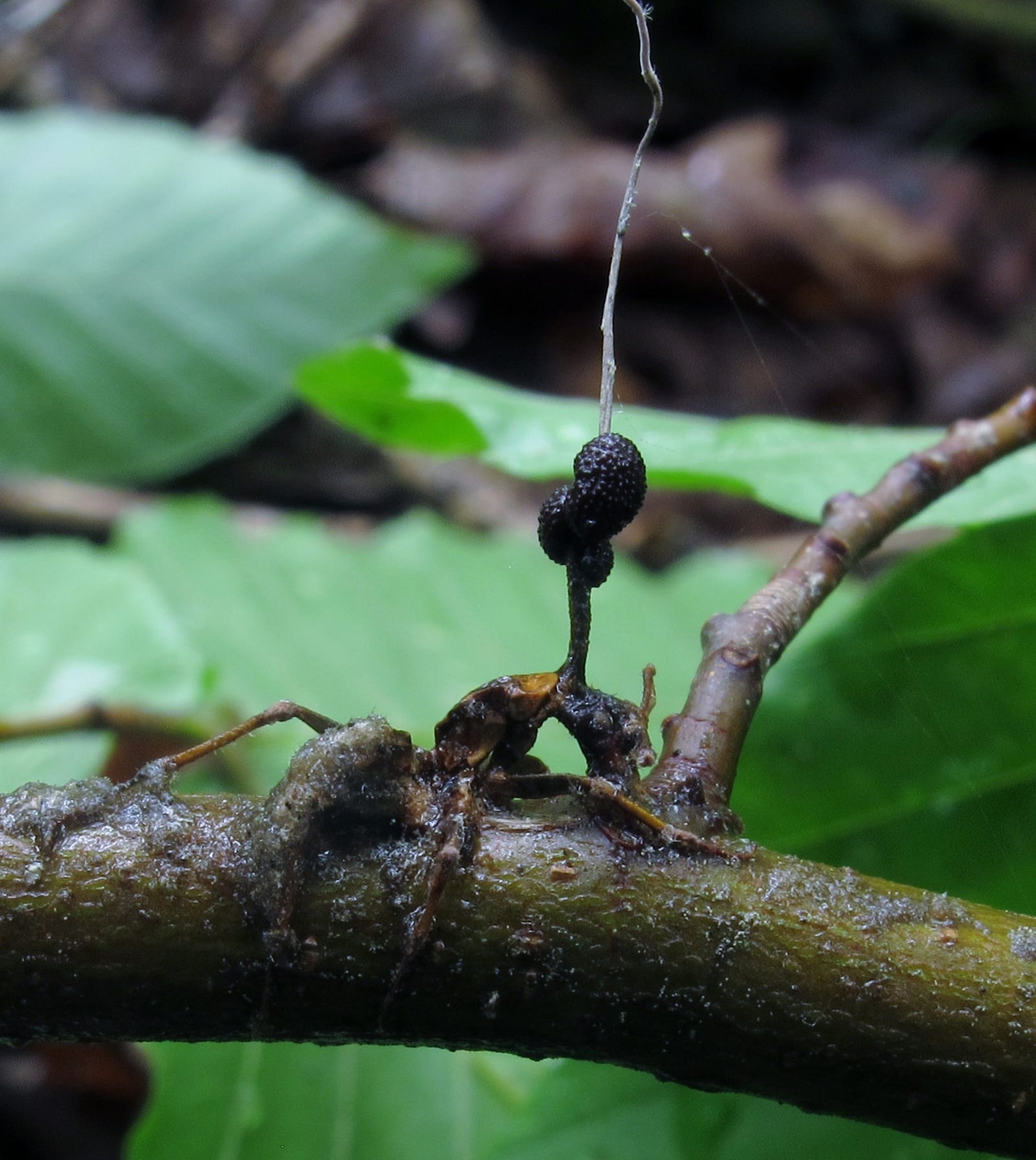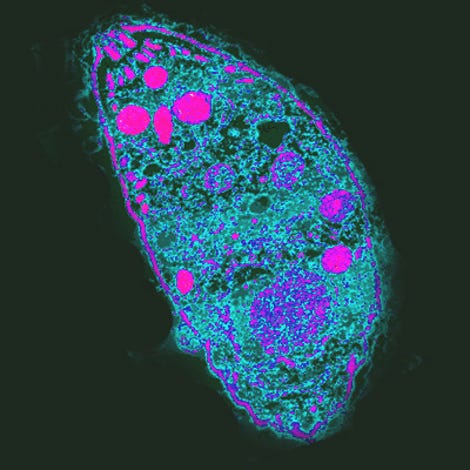
Here Are Some Upsetting Parasites
by Ed CaraThe world is filled with disturbing creatures that slither, crawl, and scuttle. But few things are more dreadful to the imagination than the animals, fungi, and other assorted organisms whose sole purpose in life is to invade and feed off the lives of others. Here are some of the creepiest parasites in the animal kingdom.

Photo: National Museum of Health & Medicine (Wikimedia Commons)
Not all parasites need to directly mess with a host’s brain to make them do their bidding. Take the human parasite Dracunculus medinensis, or guinea worm, for example. These worms, which can grow 2 to 3 feet in length as adults, are ingested as larvae through contaminated food or water. They then mature and mate inside a person’s body. When it’s time for their larvae to go forth into the world, the mother burrows right underneath the skin, triggering an intense burning pain and itch that convinces its host to head for a cooling body of water. Once that happens, the mother releases its millions of eggs. Afterwards, it can take weeks for the worm to be (painfully) removed without risking further harm to the person.

Photo: walt sturgeon (Mycowalt) (Wikimedia Commons)
Ophiocordyceps unilateralis, seen above, is known for slowly zombifying forest ants. Fungal spores infect the ant through their exoskeleton and then develop into a yeast-like stage that infests the ant brain. On the outside, the ant is somehow guided to leave its colony and climb up a high-reaching piece of greenery, where it will bite down hard and simply stay there as the fungus eats them to death. In its final stage, a stalk with fruiting buds will form from the head of the dead ant and rupture, releasing spores into the wind to start the cycle all over again.

Image: CDC
In 2018, scientists reported that a species known as the cattle eye worm had infested the eyes of a woman in the US state of Oregon – the first reported case ever documented in the US. A year later, they found another case involving a 68-year-old woman from the state of Nebraska. While having eye worms is obviously no picnic and could theoretically lead to permanent damage, both victims recovered easily – once they removed the worms from their eyes, one by one. According to the second victim, the moment of discovery came when she saw looked in the mirror and saw “three little glittering, translucent things moving across my eye.”

Photo: Frost Entomological Museum (Wikimedia Commons)
Horsehair worms prey upon cockroaches, crickets and other bugs, like this poor mantis above. As larvae, they’re typically ingested by the host. They then mooch off nutrients while hiding in the circulatory system. But it’s their arrival into adulthood that’s made them a gruesome viral star. They fatally erupt from the insect, their full length often several times longer than the host, reaching over 1 foot. Some species also manipulate the insect to first dive headlong into a body of water, drowning it and creating a comfy trip to the marine environment where the worm naturally dwells.

Image: AJ Cann (Wikimedia Commons)
The single-celled Toxoplasma gondii has earned plenty of notoriety for its life cycle that involves mice. T. gondii finds a rodent through soil that’s been contaminated with larvae-infested cat poo. Once has invaded its host’s brain, it begins subtly steering its behaviour. Whereas mice are normally fearful of cat urine, T. gondii-infected mice pay it no mind and become much less shy about exploring open spaces. If things go according to the plan, the no-longer-bashful mouse is soon gobbled up by a cat, and the process begins anew. The jury is still out as to whether T. gondii can have any mental effects on the humans it infects.
Featured image: walt sturgeon (Mycowalt) (Wikimedia Commons)